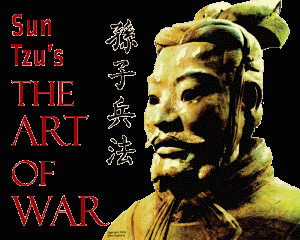A dear friend and long time associate Brad Majors and I love history. We often talked about military history and the inevitable comparisons to sport, and the game of business.
Warfare is an unfortunate part of human history. Nonetheless, when we consider the physics of our universe warfare is often a forcing function for how we overcome obstacles. This applies to how we organize people, supply and logistics; or to figure out how to gain advantage or leverage against superior physical forces e.g. a larger group, scaling a mountain, crossing a river.
We economize with limited resources; find initiative and innovation to address a problem. I found an old letter among my files from my friend Brad that summarized 10 Principles of Business (War) that are relevant today… They teach this in various forms in management programs from diverse institutions as West Point to business schools.
- Keep the Objective in mind.
- Achieve Superiority in Mass at the decisive point.
- Economize Your Forces where you don’t mass.
- Maneuver— stay moving.
- Maintain Security.
- Show Initiative— Take the Offensive.
- Do not underestimate the Element of Surprise.
- There should be Unity of Command.
- KISS— Keep it Simple, Stupid.
- There must be Cooperation among the lieutenants.
There are countless business strategy and marketing books that represent these tenets. The most interesting are those that provide past and contemporary business examples. One good book I refer to friends is by Trout & Ries: Positioning The Battle for Your Mind. There are new editions frequently printed with contemporary marketing case studies.

An ancient classic is Sun Tzu: The Art of War. This may be one of the earliest written books on the tenets of diplomacy and warfare. I’m reading a book by Henry Kissinger: On China. It makes frequent reference to Sun Tzu in the form of diplomacy and global engagement the Chinese leaders use.
 I believe there are business books written as rewrites of the Sun Tzu principles but I recommend an edition closer to the original. It’s straightforward and condensed well in a few pages.
I believe there are business books written as rewrites of the Sun Tzu principles but I recommend an edition closer to the original. It’s straightforward and condensed well in a few pages.
When I’m engaged with a company I bear these basic ideas in mind in considering how to build sustainable growth. Evaluating the application of strategies and tactics to meet objectives always comes back to these principles. I believe too often presentations around economics or finance create hard to understand abstractions for business leaders.
This then confuses the company’s underlying purpose, and the needed focus on execution of well crafted yet simple strategy. Any plan that is confused becomes too theoretical and the lieutenants can’t agree on how to follow. So, they don’t.
Of the many companies I was privileged to be involved in each case we assessed the marketing in terms of the principles above to understand the mission, our plan to get there, and what resources there are to achieve the goals. For example:
- Pepsi- a challenger brand; we positioned Diet Pepsi during a diet cola growth phase with Ray Charles to broaden appeal among all cola drinkers via entertainment that benefited the Pepsi Cola trademark and Pepsi to Wall Street as the Uh Huh…! company. A fun period.
- Compaq Presario- we outflanked IBM and Apple by presenting to consumers in a simple way how multimedia innovation and the onset of the Internet can enhance people’s life, education, and small office/home office opportunities.
- Intel- we told the story of the Computer Inside or Intel Inside visually, demonstrably,
 and simply to distinguish Intel from all other manufacturers of processors.
and simply to distinguish Intel from all other manufacturers of processors.
In each example, over the history of these brands they continue to market with focus. At times they adjust to remain contemporary, or make changes due to business cycles.
Peter Klinge, Jr. is an operating executive, board advisor and CEO cheerleader to help companies sustainably grow. He’s had both F500 and start up business experience with strong perspective borne of a career in the advertising/media industry on how to create value through communication.

